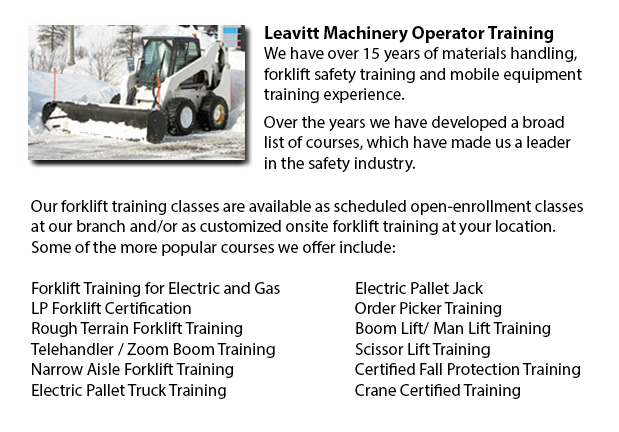
Skid Steer Ticket Glendale - The lift arms on the skid-steer loader are placed next to the driver along with pivots at the back of the driver's shoulders. These features makes the skid-steer loader different compared to the traditional front loader. Because of the operator's closeness to moving booms, early skid loaders were not as safe as traditional front loaders, particularly all through the operator's entry and exit. Modern skid-steer loaders today have various features to protect the driver including fully-enclosed cabs. Like other front loaders, the skid-steer model can push materials from one place to another, could load material into a truck or trailer and can carry material in its bucket.
Operation
There are various times where the skid-steer loader can be utilized in place of a large excavator on the jobsite for digging holes from the inside. To begin, the loader digs a ramp to be utilized to excavate the material out of the hole. As the excavation deepens, the equipment reshapes the ramp making it longer and steeper. This is a particularly useful method for digging beneath a structure where there is not adequate overhead clearance for the boom of a big excavator. For instance, this is a common scenario when digging a basement underneath an existing building or house.
There is much flexibility in the attachments which the skid steer loaders are capable of. For instance, the traditional bucket of many of these loaders could be replaced with numerous attachments which are powered by the loader's hydraulic system, consisting of pallet forks, backhoes, tree spades, sweepers, mowers, snow blades and cement mixers. Some other popular specialized buckets and attachments comprise wood chipper machines, grapples, tillers, stump grinder rippers, wheel saws, snow blades, trenchers, angle booms and dumping hoppers.
History
The 3-wheeled front end loader was invented in the year 1957, by Louis and Cyril Keller in their hometown of Rothsay, Minnesota. The Keller brothers made this machine so as to help mechanize the method of cleaning in turkey barns. This particular equipment was light and compact and had a rear caster wheel that enabled it to turn around and maneuver within its own length, allowing it to carry out the same tasks as a conventional front-end loader.
The Melroe brothers of Melroe Manufacturing Company in Gwinner, N.D. obtained during the year 1958, the rights to the Keller loader. The business then hired the Keller brothers to help with development of the loader. The M-200 Melroe was the end result of this particular partnership. This model was a self-propelled loader that was introduced to the market in nineteen fifty eight. The M-200 Melroe featured a a rear caster wheel, a 12.9 HP engine, a 750 lb lift capacity and two independent front drive wheels. By the year 1960, they replaced the caster wheel along with a rear axle and launched the very first 4 wheel skid steer loader which was referred to as the M-400.
The term "Bobcat" is utilized as a generic term for skid-steer loaders. The M-400 immediately after became the Melroe Bobcat. The M-440 version was powered by a 15.5 HP engine and has rated operating capacity of 1100 lbs. The business continued the skid-steer development into the middle part of the nineteen sixties and launched the M600 loader.
-
Aerial Lift Train the Trainer Glendale
Aerial Lift Train the Trainer Glendale - The Aerial Lifts Train the Trainer Certification Program will teach trainers how to effectively train operators in safe industrial mobile machine operation. Trainers are given in-depth instruction on aerial li... More -
Forklift License Glendale
Forklift License Glendale - In North America, acquiring a forklift license or forklift certification involves hands-on and classroom training. Regulatory control over certification, training and license for powered industrial truck operators falls un... More -
Telehandler Certification Glendale
Telehandler Certification Glendale - Telehandler certification programs are both for operators who have some experience driving a typical forklift and for individuals with no experience. The real-world training provided by these courses produces grad... More -
Operator Safety Training and Re-Qualification Training and In-House Instructor Training in Glendale
Forklifts are used in almost all warehouse operations and in boat yards and in industrial construction sites. The reach feature of a forklift is a very important component utilized in a variety of applications like for example when a shelving system... More -
Manlift Training Glendale
Manlift Training Glendale - Different manlift training programs include the content and review of manlift devices. An important portion of the program is the practicum where students show their practical ability and knowledge to safely operate a manl... More -
Crane Certification Glendale
Crane Certification Glendale - The Crane Certification Program consists of the industry suggested subject matter which will teach the safe and efficient operation of cranes. The individual would train in the following: how to identify cranes and thei... More -
Loader Ticket Glendale
Loader Ticket Glendale - Gehl articulated loaders have been made to suit practically every condition. They offer optimal maneuverability and great traction due to a heavy-duty oscillating joint that provides 45-degree rotating angles right and left,... More -
Crane Ticket Glendale
Crane Ticket Glendale - The new version of a crane could be either simple or complex, and cranes vary based on their use. Mobile cranes, for instance are rather simple. A telescopic boom or steel truss mounts its movable platform. A system of levers... More

Forklift Training Glendale
TOLL FREE: 1-888-254-6157
Glendale, Arizona
forkliftcertificationglendale.com
Email Us
About Us


